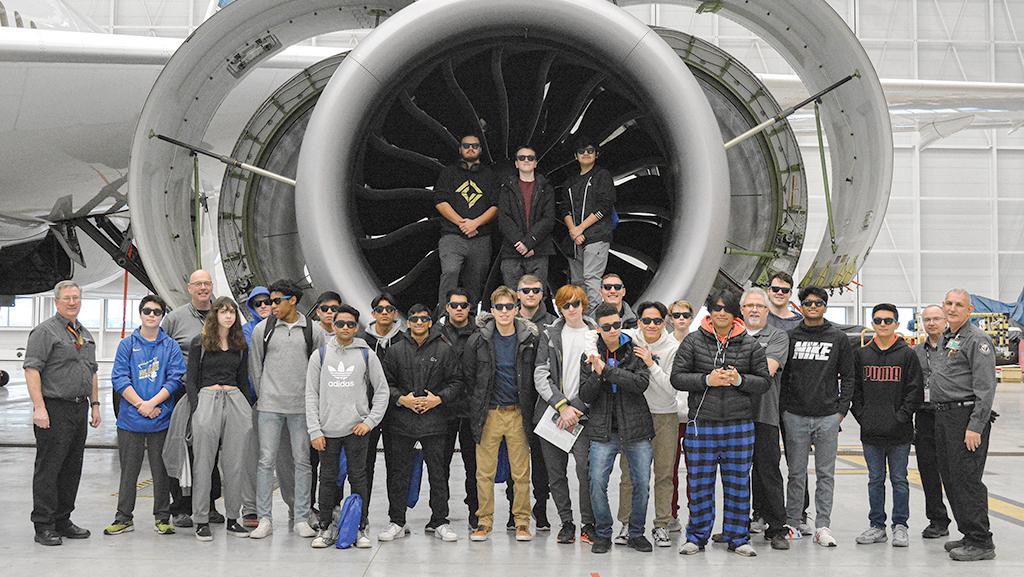How Maintenance Workforce Grants Could Support Industry Recovery

When ARSA first floated the idea of an aviation maintenance workforce grant program in early 2017, our industry was facing a very different kind of crisis.
At the time, association members were consistently telling us the technician shortage was the single greatest threat to the industry’s long-term growth. MRO providers were leaving hundreds of millions of dollars’ worth of work on the table each year because they simply didn’t have enough people to do it all. Turnaround times were suffering and threatening to undermine the efficiency of the whole aviation system.
An ARSA-led coalition worked with allies in both parties in both chambers of the U.S. Congress to develop a program that would provide federal resources to encourage businesses, schools, state and local governments and labor to work together to develop and implement creative recruitment and training programs. Ultimately, the Aviation Maintenance Technical Workforce Grant Program was authorized at $5 million per year as part of the 2018 FAA reauthorization law.
After the bill was signed, the coalition shifted its focus to obtaining annual congressional appropriations for the grants and encouraging the FAA to get the program up and running as soon as possible.
Then COVID-19 hit.
As aviation ground to a halt, almost overnight the maintenance industry lost a quarter of its 200,000 workers and half of its business activity (which had been $50 billion per year). Companies that had invested heavily in recruitment and training were forced to tell many of their employees they no longer had jobs. Although the economic relief provided through the CARES Act—in particular, the Paycheck Protection and Payroll Support programs—helped save some maintenance industry jobs, layoffs and furloughs still hit hard.
The pandemic isn’t over yet; however, with vaccine distribution underway, it seems we are closer to an end of the crisis than the beginning. Now we are just as focused on recovery and planning for an uptick in business activity as we are on helping the industry weather the storm.
Given all the economic suffering in 2020 and our frustration that the FAA took so long (more than two years) to initiate the program, the agency’s announcement on Jan. 19 that it was officially accepting grant applications came as very welcome news.
The program was designed to be flexible. A wide range of workforce development activities are eligible for grants of $25,000-500,000, including new educational programs to teach skills used in our industry, scholarships and apprenticeships, career outreach to students and underrepresented communities, educational opportunities in economically disadvantaged areas and military-to-civilian transitions. To encourage creative thinking and recognizing that there may be great ideas that don’t fall into one of these categories (and don’t originate in Washington!), programs that otherwise enhance maintenance technical education and support the maintenance industry workforce are also eligible.
Applicants must meet certain requirements stated in the law. Specifically, they must be the holder of an FAA certificate issued under Part 21, 121, 135 or 145 of Code of Federal Regulations 14; a labor organization representing aviation maintenance workers; an accredited institution of higher education, high school or secondary school; or a state or local government entity.
While the intent of the law is to encourage collaboration by requiring a business or union, school or government entity to partner in a grant application, the FAA’s Notice of Funding Opportunity (NOFO) seems to allow individual entities to apply (but does encourage partnerships).
The program is authorized at $5 million per year, but since the FAA did not expend the money appropriated by Congress in 2020, we are expecting two rounds of grant funding ($5 million each) in 2021.
General information about the programs is at faa.gov/about/office_org/headquarters_offices/ang/grants/awd. For more about NOFO and details about how to apply, go to grants.gov, search for the keyword “FAA” and click on either “FY20 FAA Aviation Workforce Development Grant Program—Aviation Maintenance” or “FY20 FAA Aviation Workforce Development Grant Program—Aircraft Pilots.”
The grant programs are the result of untold hours of work (and miles walked through the corridors of Congress) by lobbyists and members from ARSA and numerous other partner organizations. (You can see a chronicle of all who were involved, and all that they did, at arsa.org/grant-program.) The ball is now in the industry’s court. It’s up to eligible entities around the country to seize the opportunity presented by the grants and apply for resources to rebuild and position the maintenance industry for long-term success.
If you plan to apply, be deliberate, creative and thoughtful, but don’t wait: Applications are due March 22.
Christian A. Klein is the managing member of Obadal, Filler, MacLeod & Klein, overseeing the firm’s policy advocacy practice. He also is executive vice president of the Aeronautical Repair Station Association and is a member of the University of Virginia’s adjunct faculty.
